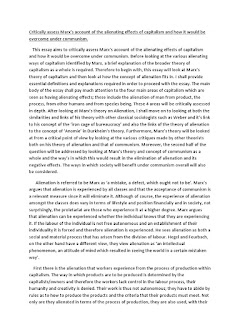Article 3 of the Uniform Commercial Code (UCC)
The Uniform Commercial Code (UCC) is a set of laws in the United States that aim to provide a standardized legal framework for commercial transactions. Article 3 of the UCC specifically deals with negotiable instruments, such as promissory notes, checks, and certificates of deposit.
Overview of Article 3 UCC
Article 3 of the UCC governs the rights and responsibilities of parties involved in negotiable instruments. It establishes the rules for their transfer, negotiation, and enforcement. This article aims to promote consistency and certainty in commercial transactions involving negotiable instruments.
Some of the key provisions of Article 3 UCC include:
- Definitions: Article 3 provides definitions for various terms related to negotiable instruments, such as "endorsement," "holder," and "person entitled to enforce."
- Form and Structure: This section outlines the requirements for a writing to be considered a negotiable instrument, which include being signed by the maker or drawer and containing an unconditional promise or order to pay a fixed amount of money.
- Transfer and Negotiation: Article 3 defines the rights and obligations of parties when a negotiable instrument is transferred. It distinguishes between negotiation, which requires the instrument to be endorsed and delivered to a new holder, and mere transfer, which involves only the physical delivery of the instrument.
- Holder in Due Course: This provision grants certain protections to a holder who takes a negotiable instrument in good faith, for value, without notice of any defects or claims against it. A holder in due course possesses superior rights over the instrument compared to prior parties involved.
- Liability and Defenses: Article 3 establishes the liability of parties involved in a negotiable instrument, such as the maker, drawer, and endorser. It also lists potential defenses that may be used to avoid payment or liability. These defenses include forgery, alteration, fraud, and material alteration.
- Discharge and Payment: This section explains the discharge of obligations related to negotiable instruments and the methods of payment. It outlines the consequences of payment, such as discharge of the instrument and the rights of parties involved.
Importance of Article 3 UCC
Article 3 of the UCC plays a vital role in facilitating commerce by ensuring the efficient transfer and negotiation of negotiable instruments. It provides clarity and uniform rules across different states, promoting uniformity and predictability in commercial transactions.
By governing the rights and obligations of parties, Article 3 allows businesses and individuals to engage in transactions involving negotiable instruments with confidence. It protects the interests of holders in due course and establishes liability for those involved in fraudulent or wrongful practices.
Conclusion
Article 3 of the UCC is a crucial component of the legal framework governing negotiable instruments in the United States. Its provisions establish rules for their creation, transfer, negotiation, and enforcement. By providing a standardized approach, Article 3 ensures consistency and predictability in commercial transactions, benefiting both businesses and individuals alike.






